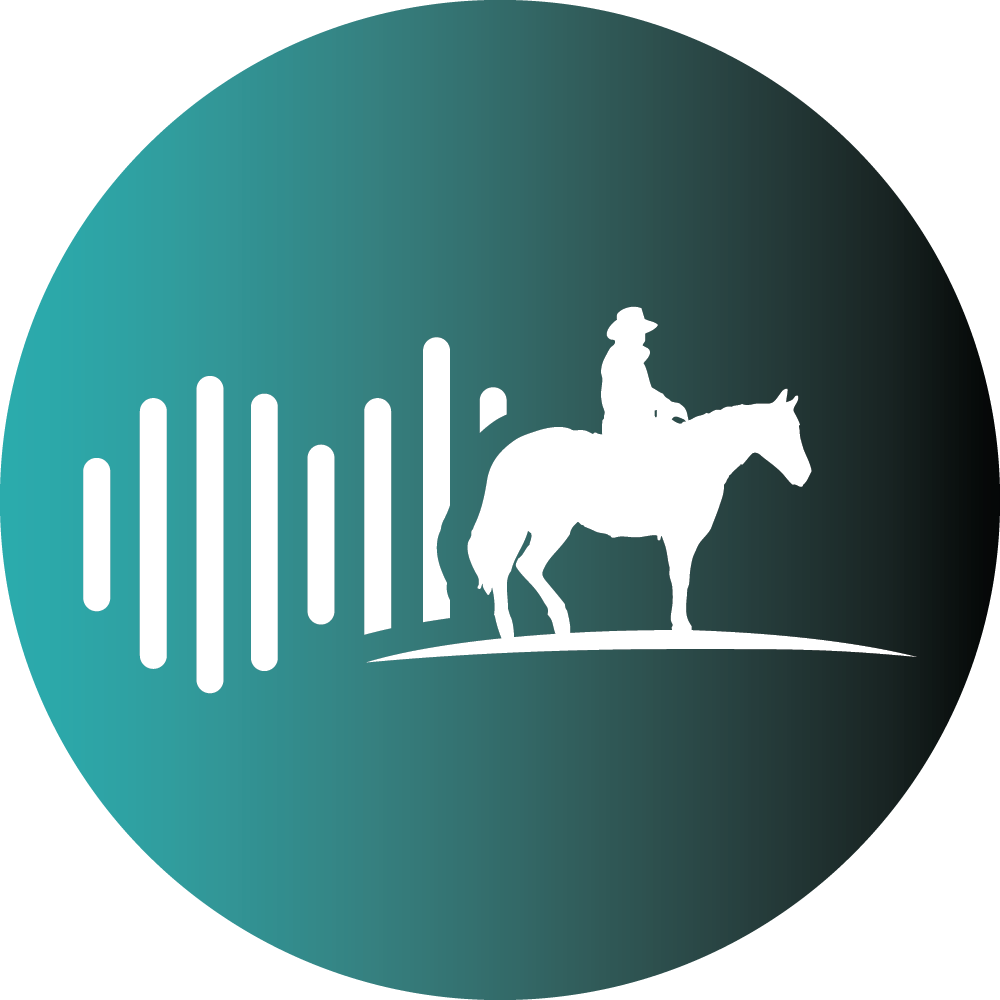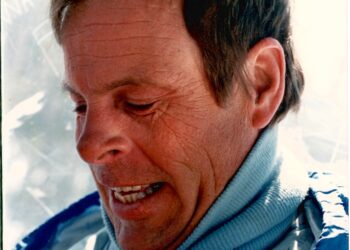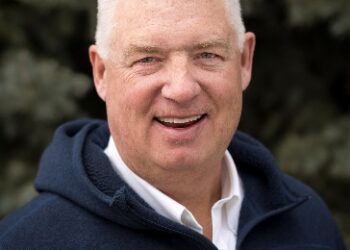For-profit group may change the face of land conservation
By Emily Stifler Explorebigsky.com Managing Editor
Warren Adams is an ideas man and a self-described nature lover.
The 45-year-old Harvard MBA created the first-ever social
networking site, PlanetAll, in 1996. It sold to Amazon.com
two years later, and he stayed with Amazon for two years as
a director of product development.
Then in 2000, Adams and his wife Megan—also a Harvard
MBA—spent a year traveling the world. They visited
Alaska, the Galapagos, the Himalaya, India, New Zealand
and Patagonia.
“Patagonia stood out among all those beautiful places for
both of us, for its grandeur, the gaucho culture and the
biodiversity,” Adams said. The sweeping panoramas and
unspoiled ecosystems of southern Chile captured them.
[dcs_img width=”300″ height=”270″ thumb=”true” framed=”black”
author=”photo by Chris Laursen” desc=”Valle California, Chile”]
https://www.explorebigsky.com/wp-content/uploads/2011/12/pat_sur_ValleCalifornia_ChrisLaursen_1-scr.jpg[/dcs_img]
Over three months, they backpacked, visited national
parks, stayed at the high-end eco-tourism lodge, Explora,
and took a boat to Antarctica. Although land was cheap, and
they loved the idea of having a permanent connection to
Patagonia, it wasn’t that simple, Adams says.
“It takes time to find the right property, to fully understand
the complex issues around title rights and man-made risks
such as mining and hydroelectric dams… and then from
a distance to manage a property for either construction or
protection. It was daunting.”
They returned home to Martha’s Vineyard, built a house
and started a family. Adams spent six years as an angel investor,
commuting between Martha’s Vineyard, New York
and Boston.
[dcs_img width=”300″ height=”270″ thumb=”true” framed=”black”
author=”photo by Alexander Verhave” desc=”Jeinimeni, Chile”]
https://www.explorebigsky.com/wp-content/uploads/2011/12/pat_sur_hawk_at-Jeinimeni_photo-by-alex-v.jpg[/dcs_img]
But he couldn’t get Patagonia out of his head. “I knew
that such an amazing and beautiful place needed protection
from inevitable development. But also, I thought it
needed a sustainable economic engine.”
In 2006, he decided to do something about it. His goal:
bring together Chileans and foreigners to pool capital,
conserve Patagonian landscapes, and make a profit
through sustainable development.
Adams founded Patagonia Sur a year later, with American
Steve Reifenberg, and Chileans Felipe Valdés Arrieta
and Arístides Benavente Aninat as partners.
The business model, Adams says, “starts with the assumption
that we’re going to protect the land. Then it
asks, ‘what environmentally-friendly things can we do
with it to create competitive returns for investors?”
Patagonia Sur now owns 60,000 acres on six remote
properties across Chilean Patagonia, and plans to grow
to 100,000 acres. The company has raised two-thirds
of a $30 million investment goal, 30 percent of which
came from Chile. It also operates a thriving eco-tourism
business through a membership club. Out of the 100
memberships, 53 have been sold.
They’ve already planted thousands of native trees on
deforested landscapes and then generated income by
selling carbon offsets. Several universities and corporations
have signed major carbon offset contracts.
[dcs_img width=”300″ height=”270″ thumb=”true” framed=”black”
author=”photo by Alexander Verhave” desc=”Jeinimeni, Chile”]
https://www.explorebigsky.com/wp-content/uploads/2011/12/pat_sur_fishing_photo-by-alex-verhave.jpg[/dcs_img]
A new framework for conservation
Adams’s vision could add an entirely new financing engine to conservation
worldwide.
“Conservation is not an add-on or auxiliary focus of the business. It
is what drives Patagonia Sur,” said Brian Ladd, Director of Business
Development.
To make a return for investors, the company has several business
sub-models: ecologically-appropriate limited development, a
membership-based eco-tourism club, real estate brokerage, eco-consulting
services, carbon sequestration and selling carbon offsets, and
ecologically-friendly aquaculture, agriculture and forestry.
“Patagonia Sur is proving that conservation is profitable,” Ladd said.
It’s what sets them apart from the handful of other foreign investors
and nonprofits that have also bought and protected large tracts of
land in Chilean Patagonia, including Ted Turner, Goldman-Sachs,
the Benetton Group, British financier Joseph Lewis, and Conservación
Patagonica.
[dcs_img width=”300″ height=”270″ thumb=”true” framed=”black”
author=”photo by Alexander Verhave” desc=”Exploring the glaciers at Los Leones, Chile”]
https://www.explorebigsky.com/wp-content/uploads/2011/12/pat_sur_glaciers-in-los-leones_photo-by-alex-verhave.jpg[/dcs_img]
By working with other major landowners to expand the new concept,
Adams thinks it could impact the entire region and add traction
to conservation efforts.
Patagonia Sur has built positive relationships with federal and regional
governments, as well as with local municipalities and schools.
The majority of the team is Chilean, and the sustainable land uses
on the properties generate new employment opportunities for local
communities.
These communities also benefit from The Patagonia Sur Foundation,
which sponsors English language and conservation education
programs in the towns near its properties, and supports various
micro-enterprises such as a weavers’ cooperative and organic vegetable
farmers.
Conservation easements
In January 2011, Patagonia Sur brought on a new partner,
Henry Tepper, as the company’s Chief Conservation Officer.
Tepper spent the last two decades working in private
land conservation in the U.S., mostly for nonprofits like
The Nature Conservancy and the National Audubon
Society.
He’s implementing Patagonia Sur’s ambitious plans to
permanently protect the company’s land holdings, while
pursuing profitable sustainable land uses, a conservation
framework called Productive Protected Lands.
In Chile, Tepper says, there’s growing interest among
landowners, nonprofit organizations and government
agencies in voluntary strategies and tools for conserving
private land.
“In some ways, the climate for conservation in Chile [is
similar] to the conditions in the U.S. 40 years ago,” he said.
That’s when the private land conservation, or “land trust”
movement was launched, making it easier for private landowners
to protect their properties.
Conservation easements are one of the most powerful tools
for private land conservation in the U.S. and Canada, and
Patagonia Sur and its partners are working hard to adapt
easements to Chilean law.
In the U.S., conservation easements are voluntary agreements
that allow a landowner to protect property by donating
development rights to a qualified nonprofit or government
agency. They’re popular because they enable the
landowner to maintain ownership, they’re tax deductable,
and they allow a range of sustainable land uses. They’ve
resulted in tens of millions of protected acres.
The creation of a Chilean conservation easement would be
a breakthrough for protecting land, Tepper says. Working
with private sector leadership in Chile, he and Patagonia
Sur are supporting conservation easement legislation currently
being considered in the Chilean Congress called the
Derecho Real de Conservacion—literally, ‘a real conservation
law’.
Using existing Chilean law, it’s already possible to create
a form of conservation easement. Called servidumbres
ecológicas, these agreements are modeled closely on their
U.S. counterparts, but carefully adapted to conform to
existing Chilean law.
“We’re moving simultaneously to protect our land with
the servidumbre ecológica agreement, and we’re supporting
the passage of the Derecho Real de Conservacion, which
will make using conservation easements even easier,” Tepper
said.
Patagonia Sur is moving to place servidumbres ecológicas on
their properties, starting with the 8,000-acre Valle California.
The agreement will ensure its permanent conservation,
while accommodating a variety of income producing sustainable
land uses, including a limited number of private
residences.
Carbon offset program
Patagonia Sur is working with
several universities and corporations
including Colgate, Harvard
Business School and Land Rover,
selling carbon offsets.
“As a conservation person, it’s
really exciting,” Tepper said
about the program. “Patagonia
was largely burnt to the ground
by settlers 100 years ago [to create
pastures for farming], and
much of it is still a deforested
landscape. We’re creating landscape
scale reforestation and
new Patagonian forest, then selling
the offsets into the voluntary
carbon market.”
Selling the offsets in voluntary
market space means companies,
universities and individuals are
purchasing them because they
think it’s the right thing to do, or
it’s good for their business—not
because they’re required.
Return on investment
To evaluate each property, Patagonia
Sur uses a sustainable land use matrix,
which means looking at an ecosystem
with an eye for input costs and for
sustainable uses that would generate
income.
“If we’re going to spend $3 million to
acquire an ecosystem, we want to know
we’re making a competitive rate of
return for our investors before we buy
it,” Adams said.
Now Patagonia Sur has to make sure they
execute and deliver. Adams is optimistic:
“The beauty of this model is if we can
do it right in Patagonia with the first $30
million, we can attract vast sums of capitol
to expand this business model in Chile and
elsewhere in the world.”
Investors should initially make around 9
percent annually from ecotourism, carbon
credits, and limited real estate sales. Once
the other sub-businesses are up and running,
that return could double.
Why it matters now
Adams and his family spend between three
and six months a year in Chile, and they
love the safe, calm nature of Patagonia.
He compares it to the American West. “If
you like Montana and Colorado, you’ll
love Patagonia. Imagine those places 200
years ago.”
Plus, the country has significant amounts
of privately owned land and the highest
standard of living in Latin America. Its
expanding economy has a big surplus and
no debts.
So conservation is possible. And it matters
right now.
“Development is happening. Roads are
going in, industries are growing,” Adams
said. “If we don’t get ahead of that
and protect these ecosystems, they’ll
quickly be fragmented.” That, he says,
would be forever irreversible, in terms
of building a coordinated approach to
development.
And Chile is listening.
Its economy is built on timber, mining,
agriculture and fisheries. Exports are key to
grow those industries. But if it Chile wants
to export to the U.S. and the European
Union with stricter sustainability regulations,
it will have to keep up.
This is a turning point for Chile, Tepper
says, and other Latin American countries
are watching.
The future
Chileans are gaining an understanding of the importance of conservation,
Adams says.
The government owns 80 percent of the land in Chilean Patagonia,
and federal agencies have recently looked to Patagonia Sur to help
with land planning and sustainable, productive use.
The company has also consulted other conservation groups and
private landowners, and is part of a bipartisan effort to make private
land conservation more achievable through federal law.
“Like any start-up, it has ups and downs and roller coasters,” Adams
says, “but most days I wake up and say, ‘this is incredible.’”
Adams is passionate about his work, and is proud to involve his
family in conservation. He likes working with people from Chile
and around the world to create something new.
The final test will be their economic success. Adams says he
expects 2012 to be the first year of significant revenue with strong
growth thereafter.
He draws an analogy to starting online social networking in 1996.
“Everyone looked at me like, ‘What? You’re going to get everyone
in the world to be part of a database and be in touch and share info?’
And we did it. This is similar in that [we’re] proving there’s a viable
concept that will then hopefully become commonplace.”
When Adams left a meeting one afternoon last year in Santiago,
Chile, his 7-year-old daughter was waiting for him in his office.
She handed him a drawing of the city. It showed cars, smog, the
sun and someone planting a tree.
Looking out the office window, she’d counted all the cars that went
by that hour, and guessed how many trees they should plant to
offset the carbon dioxide they were releasing.
“The sun had a tear falling from one eye where the city was, and a
smile where the tree was being planted,” Adams recalls.
Then she asked how much money it would cost to plant those
trees, and how much of that she would keep.
“That showed me the importance of teaching conservation to kids
and also the business side in its most bare form,” Adams said. “It is
OK to make money by protecting this beautiful place.”
[dcs_img width=”300″ height=”270″ thumb=”true” framed=”black”
author=”photo by Megan Weeks” desc=”Warren Adams and his daughter in Valle California, Chile”]
https://www.explorebigsky.com/wp-content/uploads/2011/12/pat_sur_Valle-California_warren-and-daughter_Megan-Weeks-Adams_67-scr.jpg[/dcs_img]
Valle California
The company is showcasing its new
Productive Protected Lands (conservation
and sustainable land management)
framework at Valle California, an 8,000-
acre property in the Palena region of
southern Chile.
There, mountains rise above a broad
valley, and the El Tigre River flows freely,
fed by alpine lakes. The property and
its surrounding mountains are home
to diverse flora and fauna including the
endangered huemul deer, puma, Magellanic
woodpeckers, and the largest flying
bird on earth, the Andean condor. The
122,000-acre Lago Palena National Reserve is nearby.
[dcs_img width=”200″ height=”180″ thumb=”true” framed=”black”
author=”photo by Megan Weeks” desc=”Patagonia Sur’s lodge in Valle California, Chile”]
https://www.explorebigsky.com/wp-content/uploads/2011/12/pat_sur_Valle_California_376-scr.jpg[/dcs_img]
This spectacular, pristine and accessible landscape
represents a key moment for Patagonia Sur. In 2012,
they’ll begin selling properties on 7 percent of Valle
California, limiting development to 25 houses. This
will allow private residences and eco-tourism facilities
and amenities, and owners will have use of the
surrounding permanently protected Conservation
Area. The property currently has six luxury yurts as
eco-tourism accommodations, fine dining, and guided
horseback riding, hiking, fly fishing and whitewater
rafting.
All of Valle California’s 8,000 acres are governed by
a servidumbre ecólogica legal agreement, which requires
permanent conservation and sustainable land
uses throughout. To ensure objectivity, permanency
and transparency, this agreement will be managed by
one of Chile’s first independent, nonprofit land trust
organizations.
Contact
For more information about visiting or
investing in Patagonia Sur, please contact
Brian Ladd at brian.ladd@patagoniasur.com.













